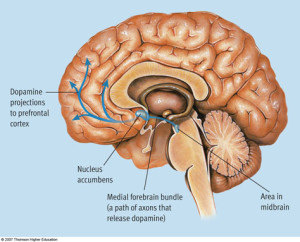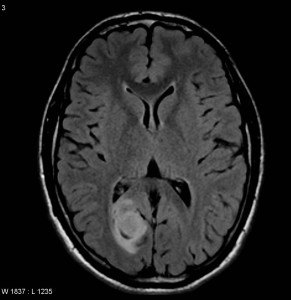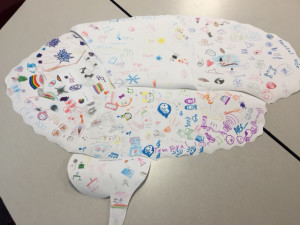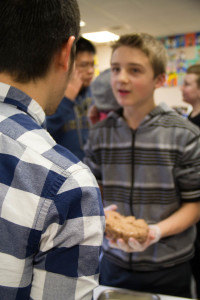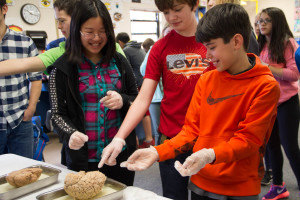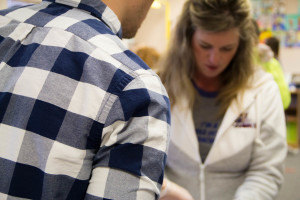We returned to Skyridge Middle School last Friday, this time for Raeleen Gilman’s classes. Courtney Miskell, Joseph Seuferling, Nathan Allen, Rosie Salice from Washington State University Vancouver, and Ellena Rosenthal from Portland State University joined us for a day of conversation about brains and behavior with four well informed groups of 7th graders.
They had many questions, ranging from how we become addicted to drugs, to the dangers of tumors in the brain. Rosie Salice talked about the role of neurotransmitters in addiction (particularly dopamine) and what activities might stimulate the reward pathway in a positive way.
There were several students that were curious about how and why tumors in the brain might affect people in different ways. Nathan Allen explained that tumors can have a variety of effects, sometimes pushing on different structures and obstructing the specific functions of those areas of the brain. For example, a tumor in the occipital lobe would likely interfere with vision…
Students were also very curious about how synaptic pruning could improve neuronal pathways important for specific functions and abilities. Why are fewer connections better?
We then talked to each class about the functions of the various lobes of the brain.
Keeping in mind what we discussed with them, students created visual representations of these various functions on cut out paper lobes. This activity gave them a chance to think about what these different lobes do in a way that was relevant to them. For example, after we discussed the parietal lobes as a GPS of the brain, several students represented this as a phone with Google maps.
When they finished, we reassembled the lobes into a whole brain which was now covered with creative student interpretations of its many functions.
We ended by giving the students the opportunity to see (and hold) real brains. Even Ms. Gilman got in on the action!




